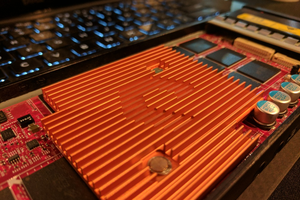The Evolution of Pure Storage FlashBlade

This paper was sponsored by Pure Storage.
2022-05-flashblade-evolution-v1.0 Download PDFBack in 2016, Pure Storage introduced the FlashBlade as its first new product line, complementing its existing and very successful FlashArray line. At launch, the functionality was limited—deliberately so—but it was never static.
Over time, and responding to customer needs, Pure added more functionality to the FlashBlade: SMB and S3 protocols were added to the NFS-only launch product. Data services such as snapshots, replication, quotas, etc. were also progressively added. Yet while adding functionality to the array software itself, FlashBlade remained very clearly a Pure Storage product.
The Purity operating system is largely the same across product lines, with local variations to suit the specifics of the device. FlashBlade was connected to the same support systems, and the Pure1 management software, that all of Pure's products use. It provided a set of unifying, cross-portfolio functionality that helped customers to manage their growing Pure Storage fleets with the same set of skills, and also handily provided barriers for competitors looking to make inroads.
Making this even harder for competitors, Pure included FlashBlade in its Evergreen Storage subscription model. Instead of waiting for a depreciation-driven refresh cycle (and associated opportunity for competitors to swoop in with a volume discount to snatch a customer) Pure made the hardware feel more like software with continual upgrades on a subscription basis.
Non-disruptive upgrades are now the norm. The subscription model makes even a consolidation to denser storage on a fresh array feel like an extension of the original purchase. A new array is essentially the same as growing the existing array. Customers can be more nimble and avoid wasting huge amounts of effort on planning exercises that were out of date seconds after printing out the business case.
This combination of technical functionality with commercial innovation and operational flexibility is what has long interested me about how Pure conducts its business, and I think is a big part of what made FlashBlade successful. It has encouraged infrastructure people to adopt a more cloud-like operational model, a trend that continues throughout the industry. We see no reason for it to stop; indeed, PivotNine believes it is long overdue.
Changing customer needs
Customer needs change and, as we often counsel PivotNine clients, preserving optionality has value and not just for futures traders on the stock market. In an industry as volatile and fast moving as technology, keeping your options open and being able to respond rapidly to change is just good business practice.
And customer needs have indeed changed in the 6 years since FlashBlade was first released, though in largely predictable ways. Data volumes continue to grow, but much more of it is created by machines themselves, rather than humans. Streams of data are now processed with tools like Kafka, and there is substantially more flow processing than purely batch processing with ETL systems of old. The growth of machine-generated data was specifically anticipated by Pure and incorporated into the design assumptions of FlashBlade. It was a bet that has paid off handsomely.
Customer expectations have also changed. Power consumption is now a bigger factor in a world where climate change looms large, yet performance expectations have only increased. Data centre power constraints are a key part of any infrastructure design, but we have moved beyond simple kilowatt-per-rack considerations to more complex performance-per-gigabyte-per-watt thinking. Storing large amounts of data is one thing, but doing so with lower power consumption and higher performance requires multi-dimensional thinking.
Accessing huge datasets quickly is a requirement, not a nice-to-have, for the latest AI/ML techniques, which is why FlashBlade is a key component of the AIRI joint architecture Pure developed with NVIDIA. We've also seen customers move to protect themselves from ransomware attacks with systems that can quickly recover large amounts of data. This change in the threat landscape is probably the biggest change that wasn't readily apparent when FlashBlade was launched.
Where customers might once have been comfortable with the $/GB/kW/s tradeoffs of arrays built from 10k RPM spinning disks, now they're simply too big, too slow, and too hot. Flash is now the first choice option, rather than the nice-to-have option, and FlashBlade is a great choice, particularly for customers who have already experienced FlashArray.
Where to next?
Obviously, FlashBlade can't remain the product it is today. It has never stayed static and, as customer needs evolve, so must the product and the portfolio it lives within.
Pure Fusion is a recognition that customers have fleets of arrays they need to manage now, not a few individual units they can look after by hand. Automation is the watchword of the industry, and infrastructure teams are bringing the heavily automated techniques of the cloud into every part of their operations. Pure Fusion recognizes that customers want choice but they also want to make changing their mind easy to accomplish. Fast flexibility is the key, and it depends on software to achieve.
Pure has long claimed ease-of-use as a key feature of its arrays, and has largely delivered on this promise. As the portfolio gets larger, and more functionality is added to the arrays, keeping things simple and easy-to-use gets harder to achieve, and requires a substantial investment in customer research and empathy.
Customers want to be able to change their mind, but they're also busy and would largely prefer not to have to think about storage. Feeling that they can rely on their vendor for 5, 8, or even 10 years requires a lot of trust, particularly given the importance of the data that customers need to look after. Pure has built up a strong and trustworthy brand over the years, but it will need to continue to invest in its products and its brand in order to maintain this trust.
PivotNine expects to see more evolutions of the FlashBlade line in the near future, and we're sure that customers expect nothing less.
